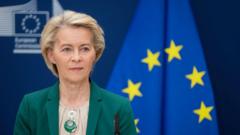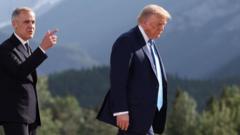After extensive negotiations, 191 nations come together to create a legally binding agreement to bolster pandemic preparedness.
**Global Health Treaty Reached as Nations Unite to Combat Future Pandemics**

**Global Health Treaty Reached as Nations Unite to Combat Future Pandemics**
The World Health Organization's pandemic treaty draft aims for a collaborative approach to global health crises.
In a historic breakthrough for global health governance, member nations of the World Health Organization (W.H.O.) have finalized a draft of a pandemic treaty designed to enhance the world's ability to prevent and react to future health emergencies. This momentous agreement comes after three years of challenging negotiations and is a direct response to the shortcomings exposed by the COVID-19 pandemic, particularly in terms of equitable access to vaccines and treatments for underserved countries.
The treaty seeks to establish binding commitments for wealthier nations to share vital information regarding pathogens and ensure the dissemination of technological resources necessary for developing vaccines and treatments globally. While the United States, which pulled out of negotiations during President Trump's administration, is unlikely to ratify the treaty, the agreement represents a significant step towards international cooperation on health crises.
According to Nina Schwalbe, a global health consultant who observed the negotiations closely, this treaty is indicative of a new era where global health collaboration can occur independent of U.S. leadership. “This agreement shows that despite challenges, the world can unite for better health outcomes, and it acknowledges the need for global solidarity in facing pandemics,” she remarked.
The W.H.O. first called for a renewed global agreement in December 2021, aiming to create a framework that would enable countries to respond more effectively to health threats in a timely manner. The final draft reflects a compromise that, while narrower in scope than initially envisioned, establishes foundational elements for collaborative efforts moving forward. There is optimism that the legally binding nature of the treaty will pave the way for broader and more effective responses to future health crises, reinforcing that countries can come together for the greater good.
The treaty seeks to establish binding commitments for wealthier nations to share vital information regarding pathogens and ensure the dissemination of technological resources necessary for developing vaccines and treatments globally. While the United States, which pulled out of negotiations during President Trump's administration, is unlikely to ratify the treaty, the agreement represents a significant step towards international cooperation on health crises.
According to Nina Schwalbe, a global health consultant who observed the negotiations closely, this treaty is indicative of a new era where global health collaboration can occur independent of U.S. leadership. “This agreement shows that despite challenges, the world can unite for better health outcomes, and it acknowledges the need for global solidarity in facing pandemics,” she remarked.
The W.H.O. first called for a renewed global agreement in December 2021, aiming to create a framework that would enable countries to respond more effectively to health threats in a timely manner. The final draft reflects a compromise that, while narrower in scope than initially envisioned, establishes foundational elements for collaborative efforts moving forward. There is optimism that the legally binding nature of the treaty will pave the way for broader and more effective responses to future health crises, reinforcing that countries can come together for the greater good.





















